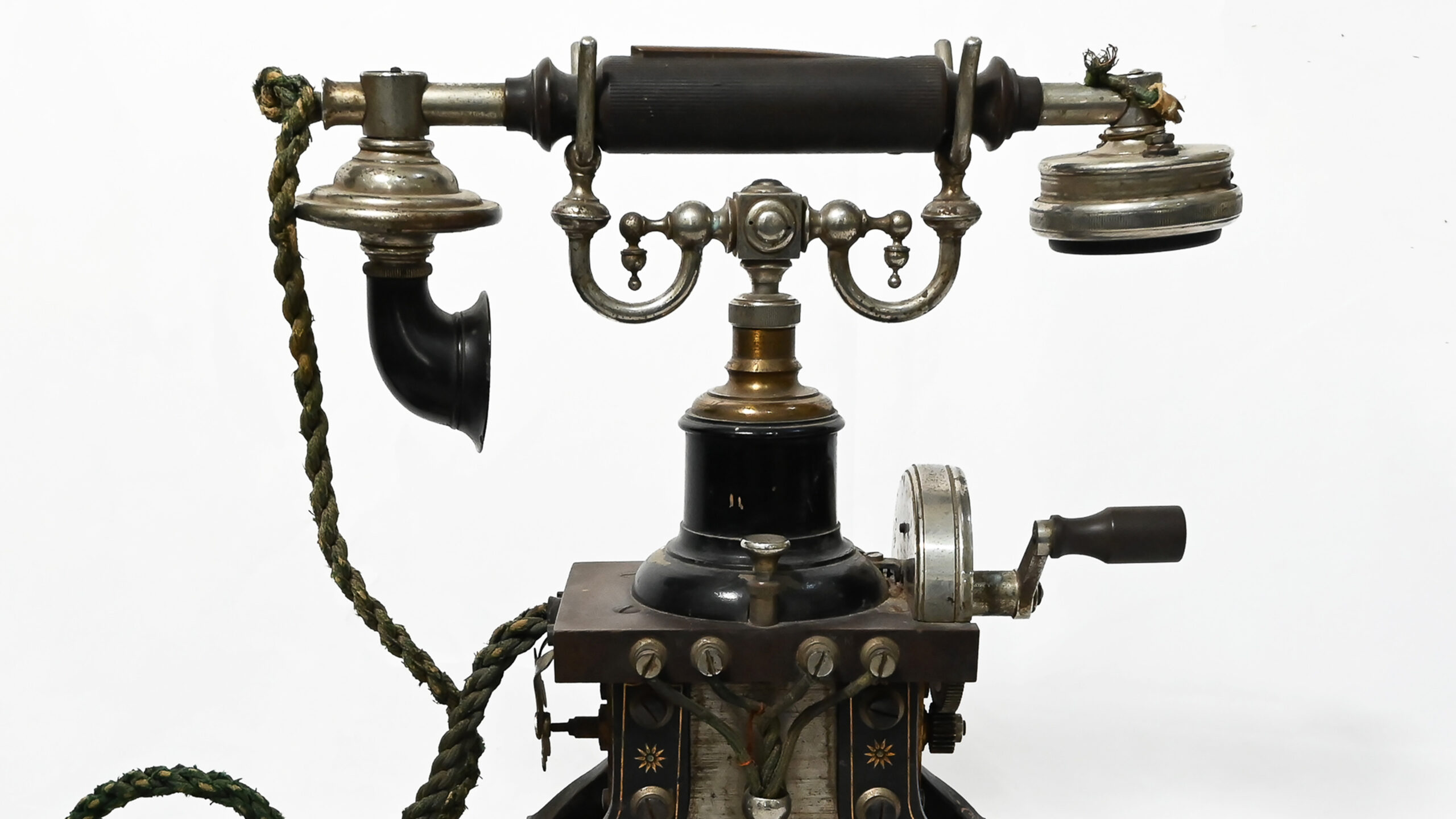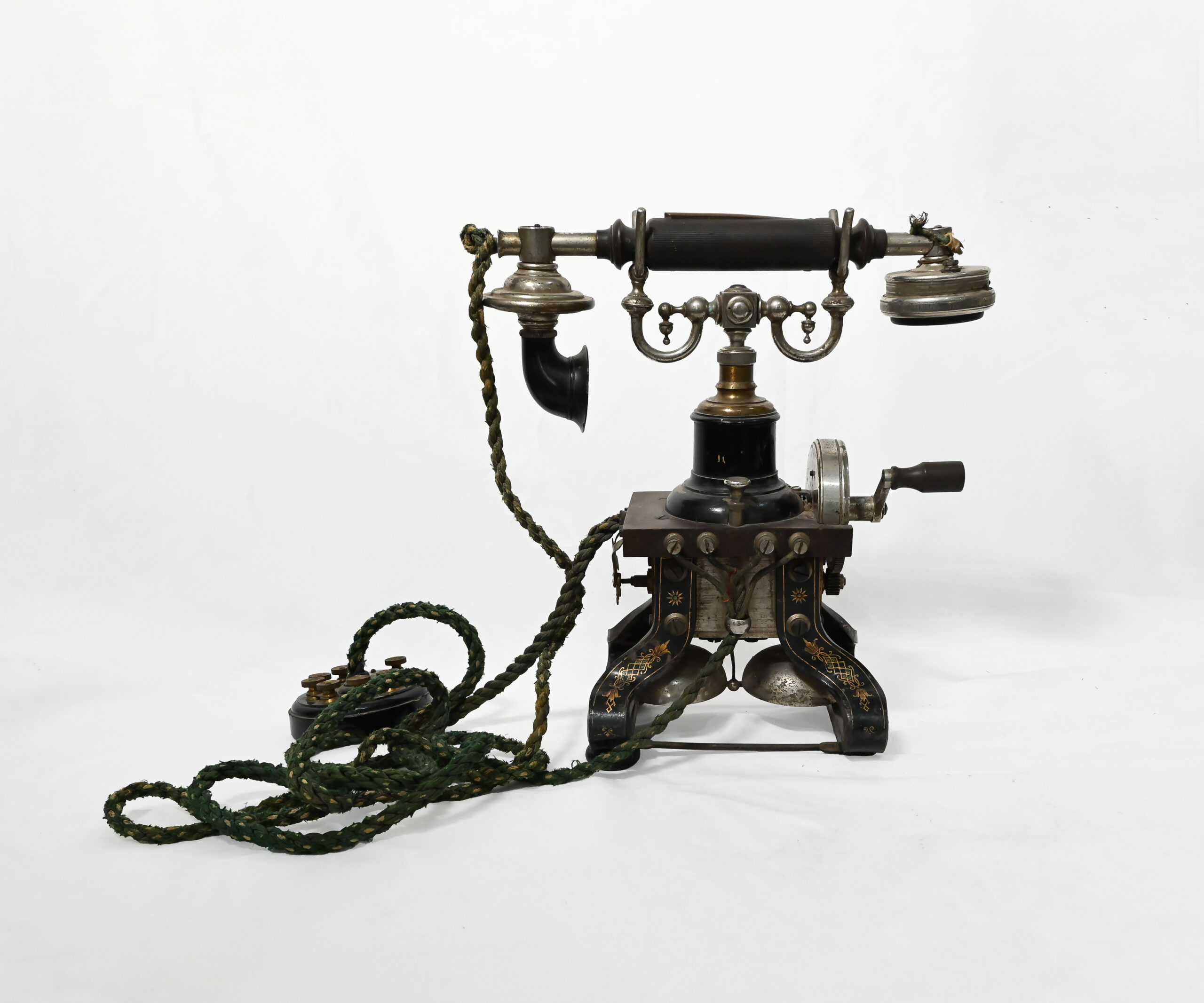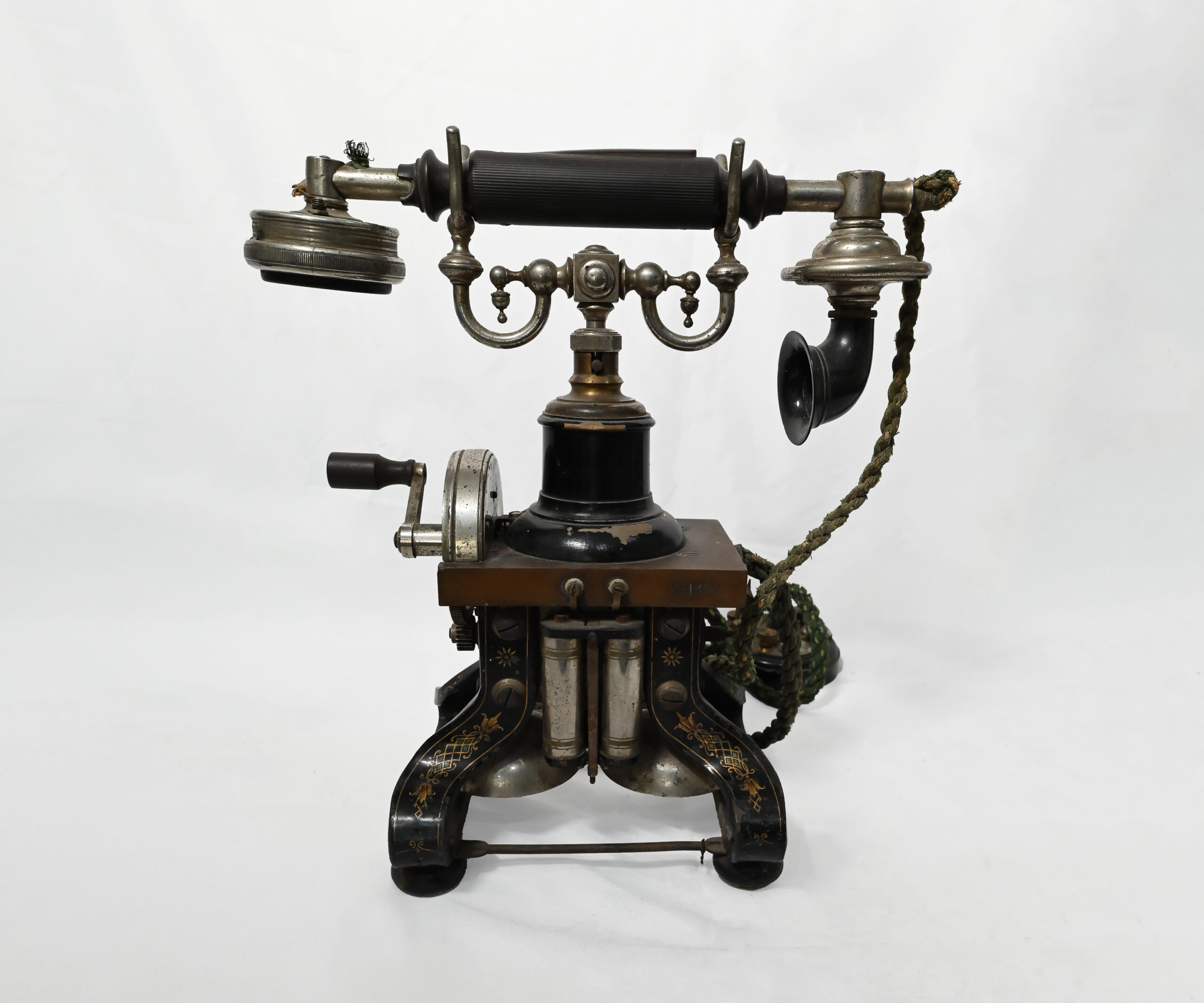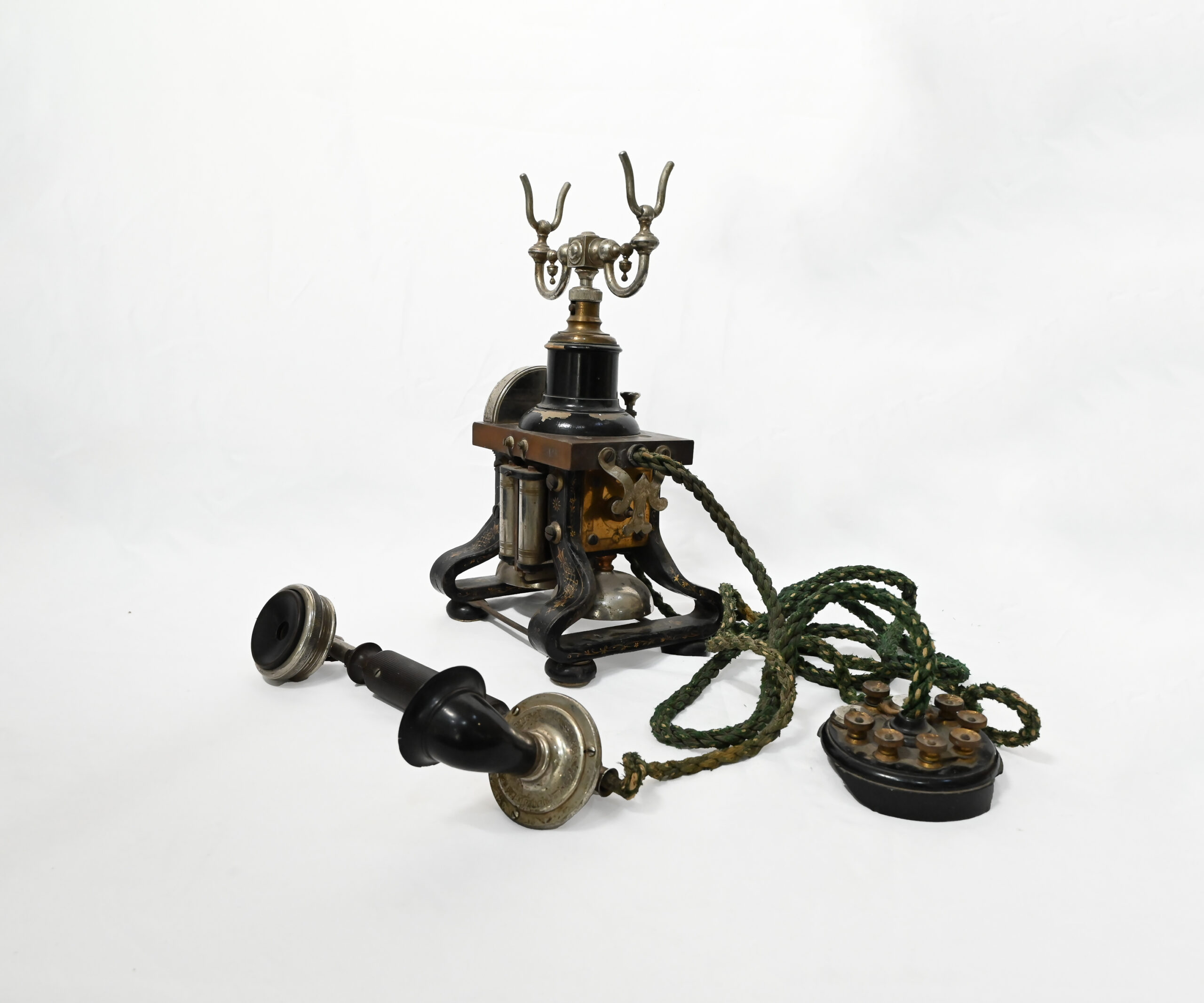Crank Calling
The Innovative Ericsson Skeletal Telephone
When this telephone was installed at the Bathurst Post Office in 1895, the only place to make it ring was the Bathurst railway station. A single telephone line operated between the two establishments to advise the post office of any mail trains that were running late, until a switchboard of twenty-five lines was installed the following year.
When the postmaster wanted to call the station master, he wound the crank on the side of the telephone. The crank turned the armature between the magnets housed in the base, and they produced the ring signal at the other end of the line. The inner workings of the device were on display in this design, and so it was dubbed the ‘skeletal’ telephone.
The Ericsson skeletal telephone was the market leader in the 1890s because it could sit on a desk. Earlier telephone designs were wall-hung, requiring users to stand and speak into a fixed mouthpiece and listen through a separate earpiece. Ericsson’s incorporation of the mouth piece and earpiece into a single horizontal handset, resting on a cradle, became the preferred design for domestic telephones for the next 100 years.
Users could place the phone on a table and enjoy their conversations while seated. This ease of use was not always appreciated by others when trunk lines were blocked by callers ‘gossiping’ for over an hour. The ‘convenient transmitter and receiver in one piece’ was held to blame because it made it ‘possible to sit comfortably in a chair and speak without fatigue.’
Ericsson was a global leader in telecommunications again in the 1990s, when it briefly dominated the mobile phone market with phones that were neither skeletal nor stationary.








